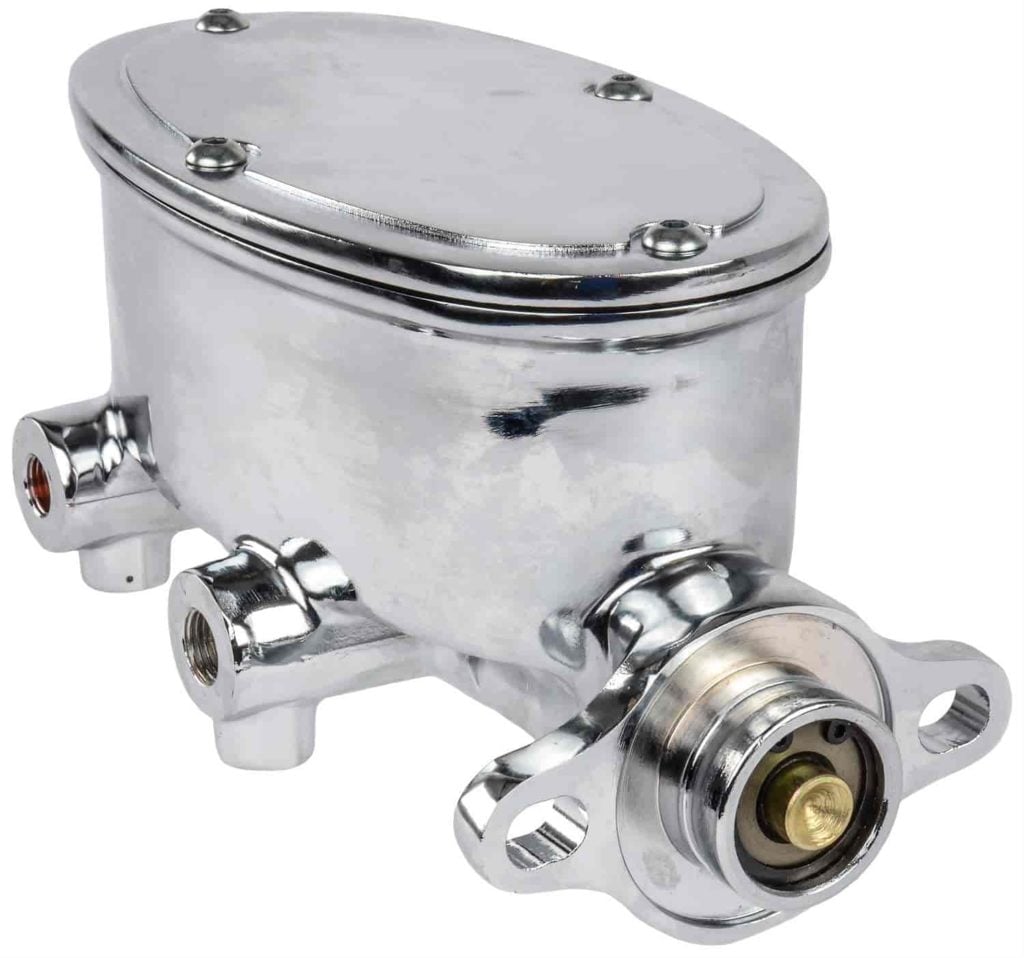Sign up now to join the JEGS email newsletter and be the first to learn about new products, special deals and e-mail only offers!



Every passenger car and pickup truck has a brake system. It's a critical part of your vehicle that allows you to slow down and stop. Nearly all vehicles on the road use hydraulic pressure to actuate the brakes. This pressure is created by the master cylinder. If you have a hydraulic clutch setup on your manual transmission, it also has a master cylinder, as it helps create the pressure needed to engage and disengage the clutch. So what exactly is a master cylinder and how does it work? Let's dive into the details.
A master cylinder is an automotive hydraulic component, mounted to the vehicle firewall, which stores hydraulic fluid and compresses the fluid through metal and rubber lines to actuate brake or clutch parts like brake calipers, wheel cylinders, a clutch slave cylinder, or throw-out / release bearing. A master cylinder has a specific purpose and is identified as a "brake master cylinder" or "clutch master cylinder".



Sign up now to join the JEGS email newsletter and be the first to learn about new products, special deals and e-mail only offers!

The master cylinder works via input from the driver's foot. When the pedal is pressed, the pedal pressure is put against a pin, which pushes the end of a piston inward at the back of the brake or clutch master cylinder. The piston compresses fluid stored above it in the reservoir, pushing it out and into the lines leading to other brake or clutch components. Once the pedal is released, the pressure pushes the master cylinder piston back, allowing fluid to go back into the reservoir and deactivating the hydraulic components. Most modern brake systems incorporate a brake booster, mounted between the master cylinder and firewall. This often doughnut-shaped component uses engine vacuum to assist the brake master cylinder compression, making pressing the brakes easier.

The most common signs of a failing clutch or brake master cylinder include leaking fluid, air bubbles in the reservoir when activating the piston, or difficulty compressing the piston in the cylinder due to corrosion or other damage.



